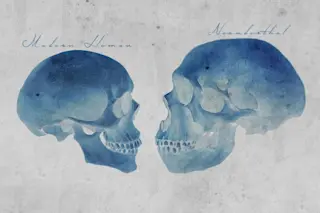It’s not as awkward as figuring out the seating at Thanksgiving, but finding the right spot for one of the newest additions to our family tree continues to puzzle researchers. First found in 2008 and named in 2010, features of the two million year old hominid Australopithecus sediba continue to defy categorization.
Nearly-complete skeletons and partial remains of Au. sediba from the fossil-rich site of Malapa in South Africa display both primitive and derived, or further evolved, traits, creating controversy over whether the early hominid was our ancestor or a distant relative.
A growing body of evidence, including six papers in the April 12 edition of Science, doesn’t rule out either scenario — but suggests Au. sediba is an unexpectedly complex mosaic of evolutionary fits and starts. The upper limbs of Au. sediba are the most complete of any early hominid known, according to one of the studies, and suggest ...














